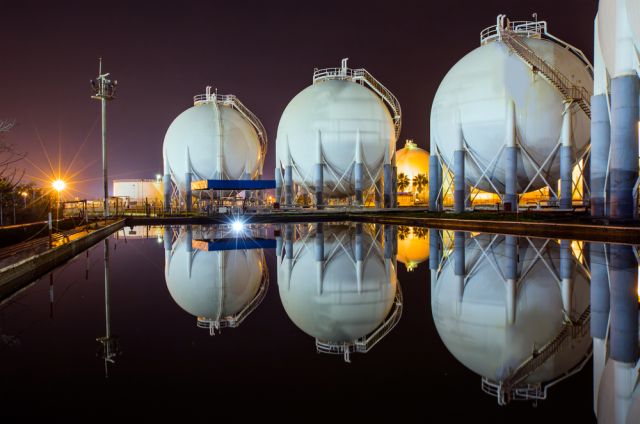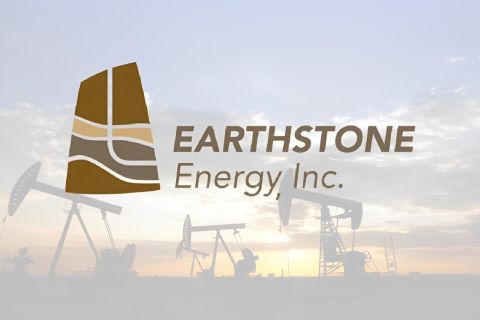
Looking ahead, Cheniere sees the market doubling to around 700 mtpa by 2040 compared to 400 mtpa now. (Source: Shutterstock)
U.S. natural gas producers supplying Cheniere Energy’s liquefaction facilities ultimately understand the link between export markets and their success, according to the company’s executive vice president and chief commercial officer Anatol Feygin.
“Every producer that we are engaged with … understands that their growth and their health is dependent on the export market and that the export market, not just in Europe but globally, very much cares about the lifecycle profile of this product,” Feygin said during an interview broadcast with Ben Cahill, senior fellow with the Center for Strategic & International Studies (CSIS).
Feygin said Cheniere buys gas from 70 plus producers and moves the molecules across different U.S. pipeline systems. The executive foresees companies continuing to improve efficiencies related to capital and hydrocarbon production compared to an initial focus in the period just after the U.S. fracking revolution that was focused on pure horsepower to drive growth.
Recent lawmaker movements in Washington have put pressure on the U.S. Department of Energy (DOE)—responsible for granting companies authorization to import and export gas—and the Federal Energy Regulatory Commission (FERC)—which has jurisdiction over the siting, construction and operation of LNG export facilities in the U.S.—to reassess what determines whether a new LNG project is in the public interest.
RELATED
Dysfunction with a Capitol D.C.
These moves and discussions have again raised concerns regarding methane emissions and climate impacts, among other things, Cahill said, especially as they relate to gas and LNG supply chains.
Houston-based Cheniere produces around 45 million tonnes per annum (mtpa) of LNG from nine trains at two locations: one in Corpus Christi in South Texas and another at Sabine Pass in Louisiana. In September 2023, the company loaded its 3,000th cargo since commencing operations in February 2016.
Feygin said Cheniere and its partners were committed to reducing emissions, and said he hoped “a lot of this regulation doesn’t fall into this,” adding that a level playing field was important as well as transparency and the ability to validate whatever is reported.
“And we are all for that. We think that that is absolutely key,” Feygin said.
RELATED
Beach Town Corpus Christi Grows into America’s Top Energy Port
LNG market balancing act
Feygin added that the three pillars of LNG demand growth remained roughly equally split between China, south Asia and southeast Asia.
Looking ahead, Cheniere sees the market doubling to around 700 mtpa by 2040 compared to 400 mtpa now, considering around 100 mtpa of supply will come out of the market over the next decade or more related to legacy projects.
Feygin said inventories were in good shape in Europe and parts of Asia and that the industry was getting ready for a third wave of LNG supply over the next couple years.
Continued growth in LNG supply is expected to come mainly from the U.S. and Qatar, and Feygin said those additional volumes would help rebalance the market.
“So, we see everything in place to continue that growth. We see the investment in pipelines, storage power plants, regasification terminals, shifts away from coal in some markets, shifts to replace domestic and regional gas production in some markets,” Feygin said.
Feygin said Cheniere’s business model wasn’t exposed to marginal market conditions and was 95% contracted through the middle of the next decade.
“We're really designed to collect that fixed fee and build infrastructure to supply our long-term customers with what has been and will continue to be a very low volatility, relatively affordable and of course increasingly clean product,” Feygin said.
Regarding LNG prices, Feygin said a price between $20/MMBtu and $50/MMBtu was terrible for Cheniere and consumers.
“We need this industry to be healthy and we need it to be able to economically grow demand,” Feygin said. “China has over 40 gigawatts of gas-fired power generation under construction and the best-case scenario is that that is fed with a MMBtu price in the high single digits. So, we think of those economics, everybody wins.”
Recommended Reading
Dividends Declared in the Week of July 22
2024-07-25 - Second quarter earnings are underway, and companies are declaring dividends.
Riley Permian Increases Stake in West Texas Power JV with Conduit
2024-05-22 - Riley Exploration Permian increased its ownership in RPC Power, a JV with Conduit Power, to 50% from 35% and has agreed to sell up to 10 MMcf/d of natural gas as feedstock supply for the generation facilities as RPC plans to sell to ERCOT.
Earthstone’s Anderson Relaunches, Seeks Conventional
2024-05-24 - The new E&P PetroPeak Energy will also take a look at unconventional property in the Eagle Ford and Austin Chalk.
Equitrans, EQT Announce Preferred Stock Election Deadline
2024-06-24 - Equitrans Series A preferred stockholders have until July 9 to vote on the consideration they prefer to receive once the merger with EQT takes place.
Offshore Guyana: ‘The Place to Spend Money’
2024-07-09 - Exxon Mobil, Hess and CNOOC are prepared to pump as much as $105 billion into the vast potential of the Stabroek Block.






